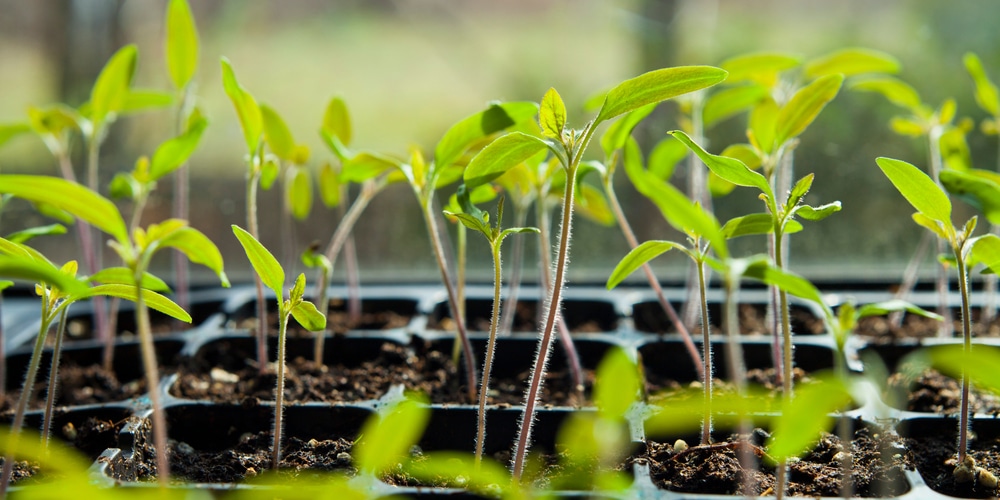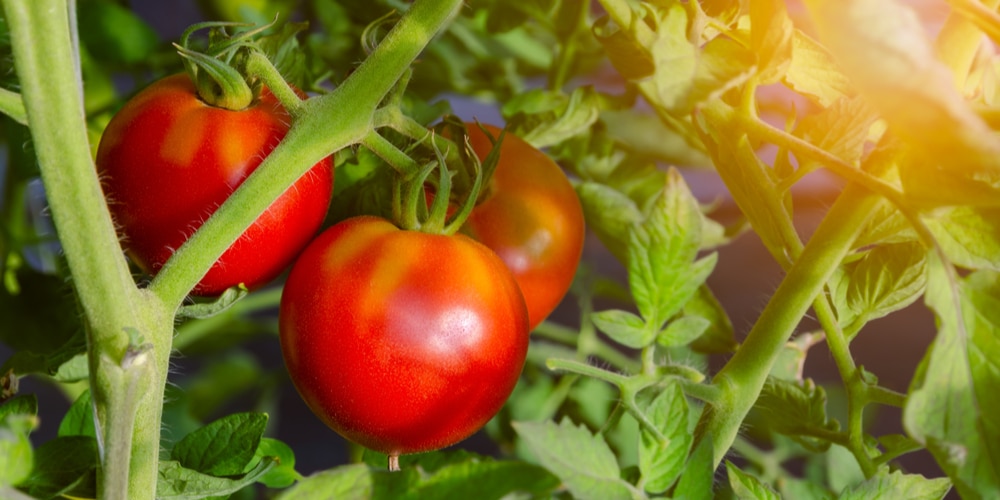Looking to grow tomatoes but don’t know the best time to plant them? If you’re in Utah you’d certainly want to know, ‘when to plant tomatoes in Utah?’
The best time to plant tomatoes is 10 to 14 days prior to the estimated last frost date in your area. If in containers, you can start 60 days before the last frost date and transplant to your garden once the cold has passed.
When is the Best Time to Plant Tomatoes in Utah?
In Utah, you can plant tomato seeds directly in your yard or garden around two weeks before the last frost passes. Most gardeners in the state transplant them using black plastic to make them mature at an earlier date.
You might be worried that the cold will affect the seedlings’ growth, and for this reason you can cover them with burlap sacks or similar material when low temperatures strike. It’s worth noting that you should wait until the ground warms to at least 75 degrees F before you apply organic mulch.
Plant date can also depend on the tomato variety and whether they mature early, mid-season or late. Utah’s growing season is relatively short, and thus you’ll want to grow semi-determinate or determinate species for the best results.
Tomato plants generally require 60 to a hundred days to grow from seed to harvest. You can get a head start by opting for ‘starter plants’ to put on the ground once the weather has warmed up in spring.
How to Plant Tomatoes in Utah
Growing medium is just as important as location when it comes to growing tomatoes in Utah. You’ll want a rich and well-drained soil so the plant gets all the nutrients it needs to produce healthy and juicy fruit.
Tomatoes will want a site that gets full sunlight. Check the ground and see if it’s well-draining and doesn’t hold too much moisture. Also, you can test the soil for fertilizer content.
If not, amend the soil with sand or organic matter, as well as add dry fertilizer in the soil. As a rule of thumb you can add an inch of compost for every hundred square feet of planting area.
Tomato transplants should have around 5 to 7 leaves and a robust root system before they could be planted outside. Seeds readily germinate at 80 degrees F or above and get established in temperature range 65 to 70 degrees F.
It’s worth noting that light plays a major role in producing healthy transplants. If environmental light isn’t possible you can employ grow lights or fluorescent lights for supplementation.
Plant tomato seeds half an inch deep and observe 18 inches spacing in-between, then thin out once the seedlings sport at least two leaves. For transplants, observe a distance of two feet between them and 3 feet for rows.
How to Grow Tomatoes in Utah
Tomato growers can add a layer of black plastic to act as mulch. This keeps the soil warm and relatively moist while inhibiting the growth of weeds. It’s not recommended to add mulch until the temperature reaches 75 degrees F and above.
Watering tomato plants should be done infrequently, but deeply. Mulch, whether as black plastic or organic mulch can help conserve moisture so you won’t have to water as much.
Apply water until you’re sure it’s reached deep enough, or else you stand a chance of having the plant develop blossom-end rot.
As far as fertilizing is concerned you should only apply it occasionally and only at week 4 and week 8 after transplanting. A pure nitrogen fertilizer such as 21-0-0 is recommended as a side dressing.
Sprinkle around, then water in well so it soaks in the soil and can be absorbed by the plants.
Wire cages or wooden stakes can be installed to support the vines and keep the fruit off the ground. Indeterminate and semi-indeterminate varieties will require some form of support, as well as regular pruning to keep it manageable.
Keep away fruit worms, flea beetles and aphids by picking them off whenever you see them or using jets of water to dislodge them.
To prevent common diseases such as leaf blight, wilting and viruses you should avoid overhead watering and control aphids as soon as you spot them.
Related Article: Planting Strawberries in Utah


